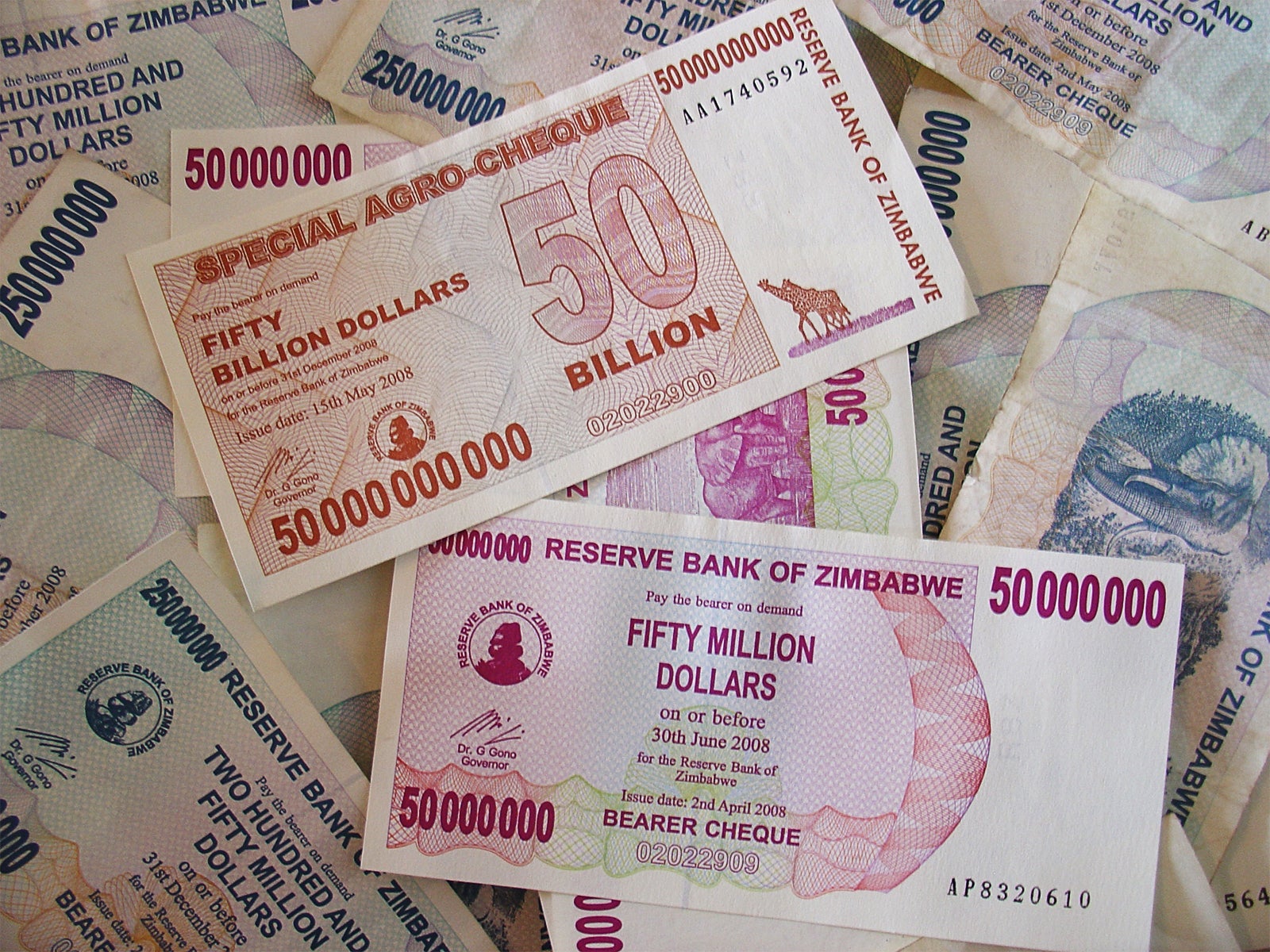Your support helps us to tell the story
From reproductive rights to climate change to Big Tech, The Independent is on the ground when the story is developing. Whether it's investigating the financials of Elon Musk's pro-Trump PAC or producing our latest documentary, 'The A Word', which shines a light on the American women fighting for reproductive rights, we know how important it is to parse out the facts from the messaging.
At such a critical moment in US history, we need reporters on the ground. Your donation allows us to keep sending journalists to speak to both sides of the story.
The Independent is trusted by Americans across the entire political spectrum. And unlike many other quality news outlets, we choose not to lock Americans out of our reporting and analysis with paywalls. We believe quality journalism should be available to everyone, paid for by those who can afford it.
Your support makes all the difference.Zimbabwe’s central bank is phasing out its massively inflated local currency and is moving to adopt the US dollar.
From Monday residents will be able to exchange bank accounts of up to one hundred and seventy five quadrillion Zimbabwean dollars ($175,000,000,000,000,000) for five US dollars. ($5)
Accounts with higher balances will be exchanged at a rate of thirty five quadrillion ($35,000,000,000,000,000) Zimbabwean dollar per US dollar ($1).
The transitional exchange period lasts until the end of September.
US dollars are already in widespread unofficial use in the country, as they are in large parts of the African continent.
The country officially stopped printing the Zimbabwean Dollar in 2009 after a period of inflation which hit billions of per cent a year.
The national currency has remained in informal use since then, however.
“The decommissioning of the Zimbabwean dollar has … been pending and long outstanding since 2009,” Zimbabwean central bank governor John Mangudya was reported as saying by financial news service Bloomberg.
“We cannot have two legal currency systems. We need therefore to safeguard the integrity of the multiple-currency system or dollarization in Zimbabwe.”
Zimbabwe has long suffered from hyperinflation of its currency, initially triggered by the government printing money to finance overseas operations.
The currency’s crisis has been self-perpetuating, however, with the country’s population lacking any confidence that their money will be worth anything the next day and prices rising to compensate.
The government has tried to restrain inflation by using price controls but this was not effective.
Businesses were initially licenced on a regulated basis to use foreign currencies but this provision has since been extended.

Join our commenting forum
Join thought-provoking conversations, follow other Independent readers and see their replies
Comments